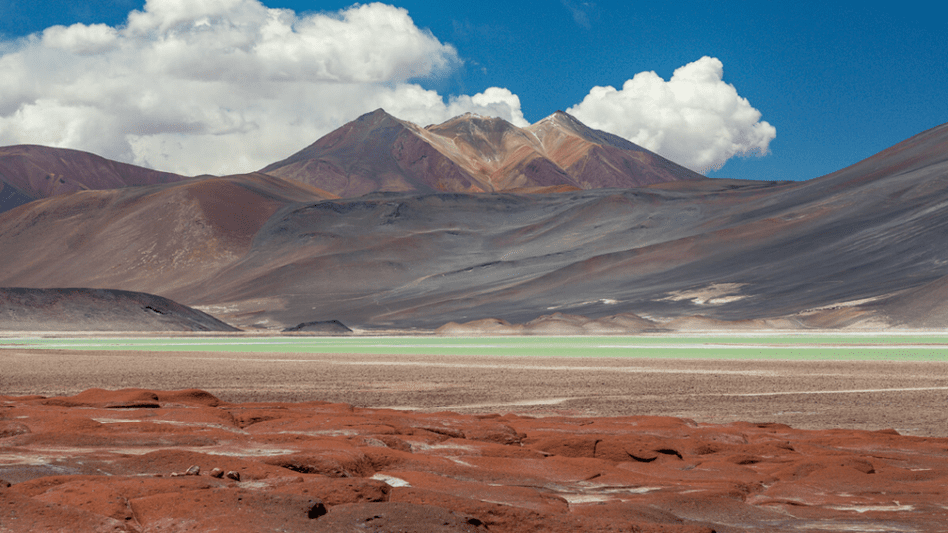
ATACAMA DESERT, THE DRIEST PLACE ON EARTH
Our trip started in the dusty little town of San Pedro de Atacama which disappoints at first until you get to see the otherworldly landscapes of the Atacama desert, the driest place on Earth outside the poles. It is a place full of moon-like scenery, salt lakes, geysers, hot springs, colorful lagoons, and some incredible rock formations.
We started our adventure with a visit to the world-famous and most powerful ALMA Observatory. It is the largest astronomical project in existence- a single telescope of revolutionary design, composed of 66 high-precision antennas. ALMA is an international partnership among Europe, the United States, Canada, Japan, South Korea, Taiwan, and Chile and is used for studying the universe at the millimeter and sub-millimeter range of light. It’s designed to spot some of the most distant, ancient galaxies ever seen, and to probe the areas around young stars for planets in the process of forming. Alma radio telescope is capable of receiving wavelengths of around 1 millimeter.
The observatory is among the highest on Earth, at an altitude of 16,570 feet (5,050 meters) above sea level. Its perch high atop the Chajnantor plateau puts it above much of the Earth’s atmosphere which blocks and distorts most of the invisible light. Also, ALMA’s location in Chile’s Atacama desert, the driest place in the world, means almost every night is clear of clouds and free of light-distorting moisture. Some weather stations in the desert have never received rain, and scientists think the Atacama got no significant rainfall between 1570 and 1971.
After Alma, we went to have lunch at a nice local restaurant La Pica del Indio where thanks to our total inability to speak Spanish and no tables available we were lucky enough to be seated with a young Chilean guy who agreed to share the table with us. He spoke perfect English and turned out to be a private tour guide who moved to San Pedro from Santiago being totally enamored with the desert he ended up providing us with a detailed itinerary for our remaining days in the Atacama including the best hours to take pictures in each place, all of it written down in my iPhone Evernote app.
This would be one of our most cherished encounters along with other wonderful, curious, and adventurous people from all over the world that we always meet in our travels. He told us to see Chaxa Lagoon (shown below) which is part of Salar de Atacama (the largest salt flat in Chile) with its flocks of Andean, James, and Chilean flamingos at sunset. It was a truly great spectacle along with myriads of salt ponds framed by volcanoes and painted in different shades of red by the descending sun.
Salt lagoons are swarming with life, and brine shrimp among them can remain dormant for years waiting for the right conditions: 96% of the water coming to Salar evaporates leaving 4% as highly concentrated brine.
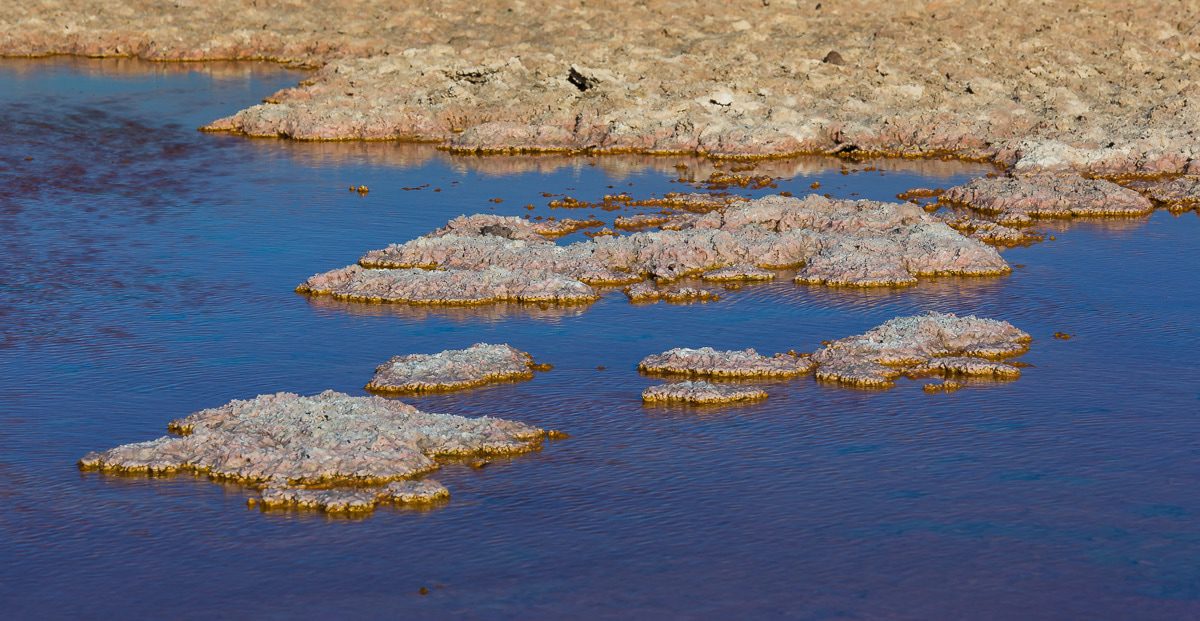
The next morning the guide advised us to go to Valle de la Luna. While everyone rushes there at sunset we got it almost all to ourselves in the morning.
It is a place of incomparable and somewhat menacing beauty with its dunes, incredible rock formations, and dry lakes, all covered with a white mantle of salt. This moonlike landscape leaves you mesmerized and speechless at what millions of years of erosion can do.
We hiked the dunes and admired the great amphitheater with an afternoon trip in store to see another place of great beauty, Valle de Arcoiris (Rainbow Valley).
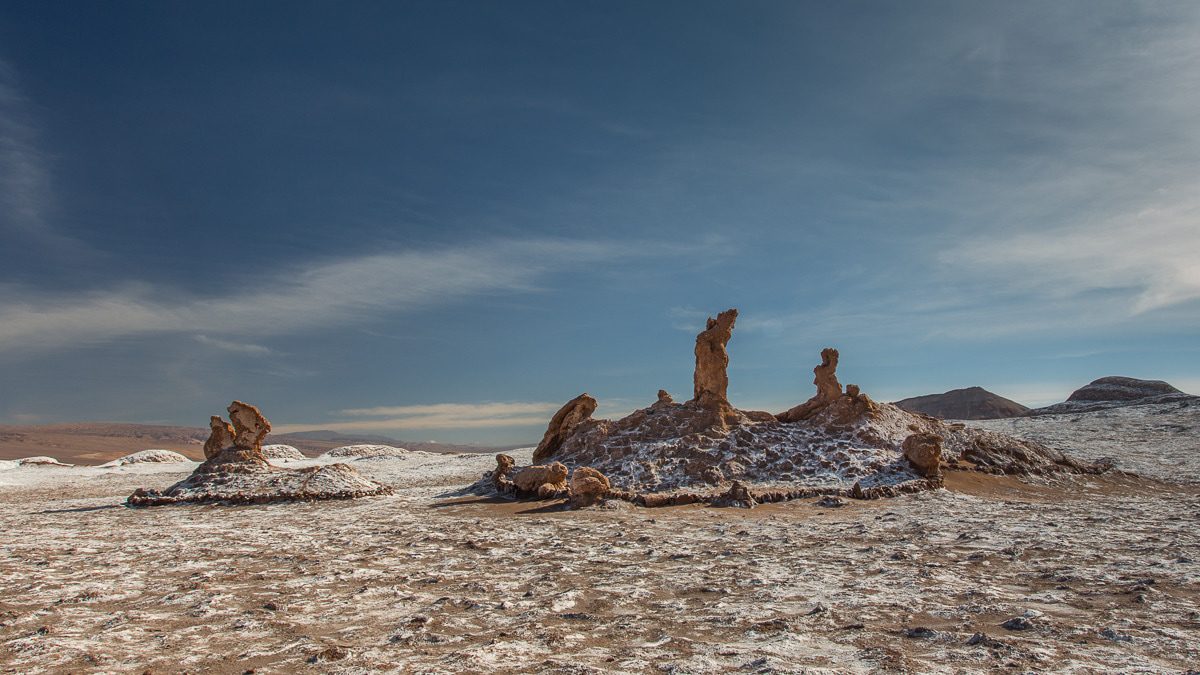
Valle de Arcoiris was a whole trip in itself which led us to a very isolated and beautiful multicolored canyon at 11500 feet. However, having rented a regular car we were not sure we were going to make it all the way. We had to stop at a small river crossing and walk for about 45 minutes through one of the most desolate areas before reaching the valley. Only one van carrying a couple of tourists passed by and they refused to take us which made us really worried if we could make it before the dark but fortunately we did and the reward was unforgettable.
Mineral deposits have left all shades of vibrant reds, browns, purples, greens, and yellows over the course of thousands of years of erosion. Those coupled with wind and occasional rain had then carved some spires and canyons into the valley, all highlighted by a beautiful sunset. Another otherworldly landscape to remember serving as a backdrop to grazing vicunas (llama family).
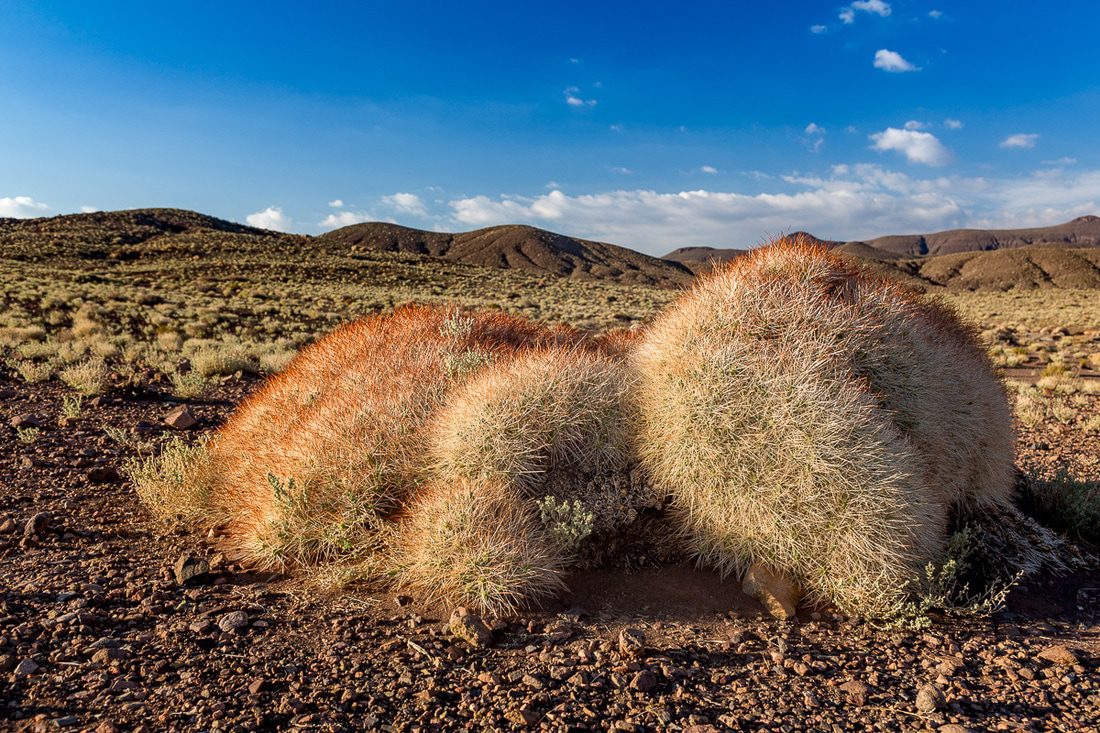
The next day was a day trip to see Altiplanic (high altitude) lagoons – Miscanti, Miniques, and Salar de Talar with its Piedras Rojas (Red Stones), located almost 14,000 feet above sea level and Talar being the most stunning of them all.
Deep blue lakes backed by snow-capped volcanoes and visited by flamingoes and vicunas are very different from Salar de Talar (Salar de Aquas Calientes) with its red rocks and wind-swept mountains towering over the emerald waters.
It will keep you wondering again and again about the incredible beauty of this corner of the world. Also, the road itself was unbelievably scenic with golden altiplano grasses glowing in the sun which we would then see again and again during our travels in Bolivia where they made an even more stunning contrast with Laguna Colorada (Red Lagoon).

Another day of this incredible trip was a tour we took to Salar de Tara, one of the most popular tours from San Pedro. We went with a group of people from all over the world (France, Brazil, Germany, Australia) as this was a place that is only accessible in a 4-by-4, and going to almost 16,000 feet is not easy.
Again, spectacular colors and rock formations (especially white monks) leave you speechless and the Tara Lagoon with flamingos was spectacular as well.
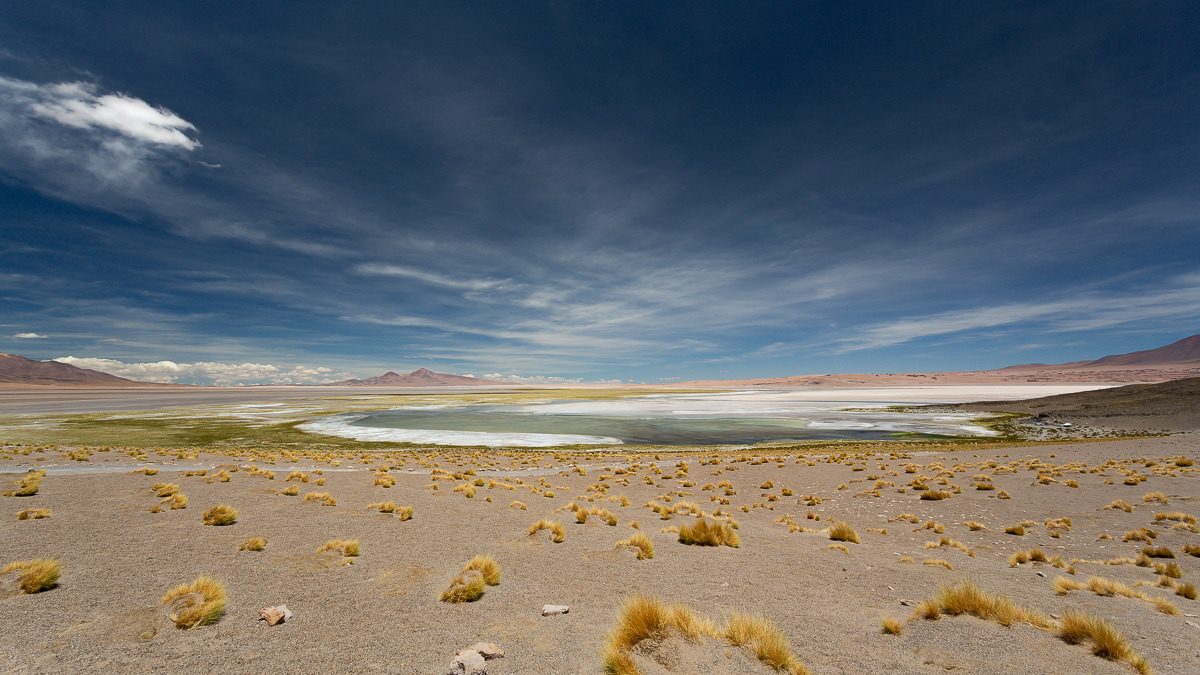
Who would have guessed that one of the world’s largest geyser fields, which ranks third in size behind Kamchatka and Yellowstone, could be found so close to the driest region? We were taken there, to Geysers el Tatio, after another very long journey and another high-altitude test that began at 5.30 am. The highest volcano in the background is known by the name Tatio, which is derived from the Quechua word meaning oven. Over 80 bubbling geysers and a hundred gaseous fumaroles feed the valley, which is surrounded by volcanoes.
When you go early in the morning, the steam is rising considerably higher than it is later in the day because of the contrast between the cold air and the hot water.
Even though it is very crowded and not as impressive as Yellowstone, the natural spectacle is still unforgettable, especially after the morning crowds have dispersed and you begin to feel like the last person on Earth. We stopped in the nearby village of Machuca on the way home to sample llama kebabs.
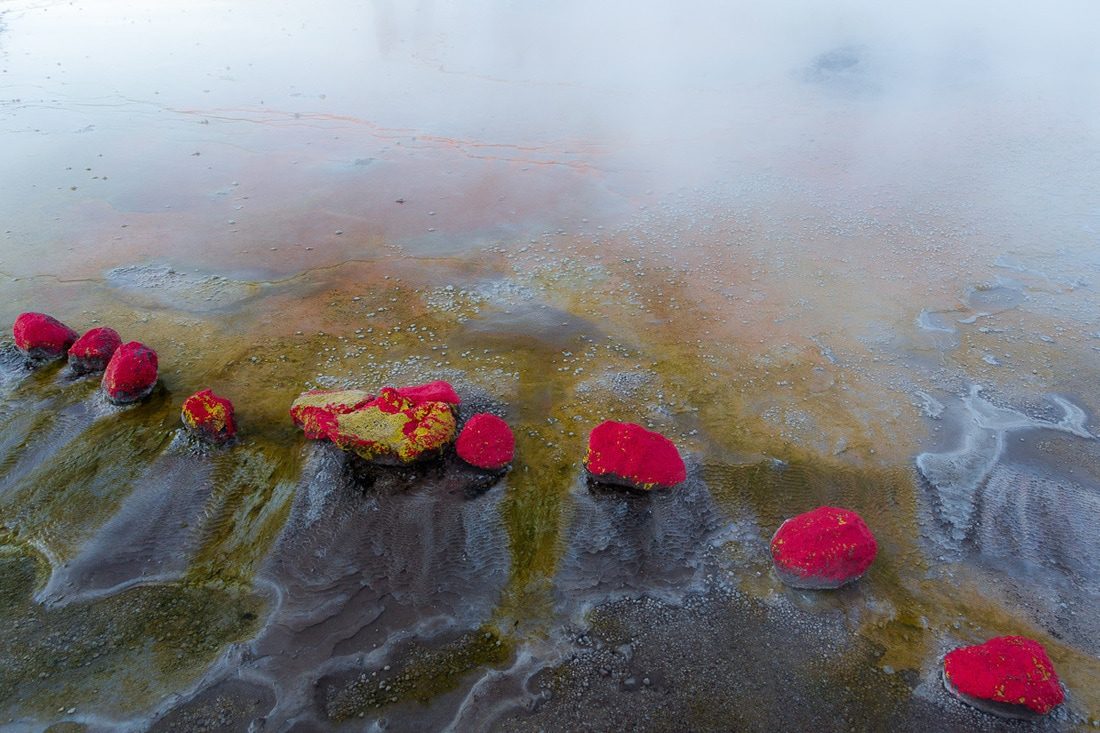
On the way back from the geysers we passed a small indigenous village, Machuca, where we had a great-tasting llama burger.
A restful evening in San Pedro de Atacama was in store for us before our most adventurous trip to Bolivia to see the largest salt lake in the world.